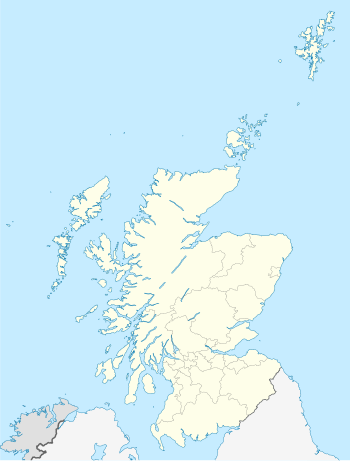네오리스토데스
Neolithodes| 네오리스토데스 | |
|---|---|
 | |
| 캘리포니아에 있는 데이비드슨 시마운트의 네오리스토드 게 | |
| 과학적 분류 | |
| 킹덤: | 애니멀리아 |
| 망울: | 절지동물 |
| 서브필럼: | 갑각류 |
| 클래스: | 말라코스트라카 |
| 순서: | 데카포다 |
| 인프라 순서: | 아모누라 |
| 패밀리: | 리토다과 |
| 속: | 네오리스토데스 Milne-Edwards & Bouvier, 1894년 |
| 종 | |
| |
네오리스토데스는 리토다과과에 속하는 킹크랩의 속이다.[2]그들은 높은 위도와 낮은 위도의 모든 주요 바다에서 발견된다.추운 지역에 124m(407ft)의 얕은 수심 기록이 있지만, 대부분의 기록은 훨씬 더 깊으며, 일반적으로 700–2,000m(2,300–6,600ft)이며, 가장 깊은 기록은 5,238m(17,185ft)로 확인된다.[3][4][5][6]이 가시의 크기는 종에 따라 다르지만, 일반적으로 붉은 색과 가시가 있는 큰 게에 비해 상당히 크다(N. 그리말디와 같은 종은 긴 종에서 아주 짧은 종까지, 큰 개개인보다 작은 종에서는 더 뚜렷하게 나타난다).[5][7]
바나클과 같은 다양한 sessile 유기체는 때때로 그들의 캐러페이스와 다리에 붙어있으며,[4][8] 작은 등신 앰프코드는 그들의 캐러페이스에서 살 수도 있다.[9]그들은 간혹 알 덩어리를 게의 아가미 방에 눕혀 부화할 때까지 이동성 '집'을 형성하는 카렙토스속 기생 달팽이의 희생양이 되기도 한다.[5]반대로, 일부 청소년 네오리스토드는 스코토플레인즈 해삼과 같은 관계를 가지고 있다.큰 포식자로부터 자신을 보호하기 위해 어린 게는 해삼 밑에 숨는다.[10]
네오리스토드라는 단어는 새로운 것을 의미하는 그리스 신과 킹크랩의 밀접하게 연관된 리토드에서 유래되었다.후자의 속명은 돌과 같은 뜻을 가진 라틴어 석화에서 유래한다.[11]
종
이 속에는 다음과 같은 종들이 있다.[2]
- 네오리스토드 아가시치 (스미스, 1882년)
- 네오리스토드 아스페리무스 (바르나드, 1947)
- 네오리스토드 브로디이 (Dawson & Yaldwyn, 1970)
- 네오리스토드 브론위네 (아형, 2010)
- 네오리스토드 카펜시스 (스티브빙, 1905년)
- 신석기류 (베네딕트, 1894년)
- 네오리스토드 두하멜리 (매퍼슨, 2004)
- 네오리스토드 플린데르시 (아형, 2010)
- 네오리스토드 그리말디시 (Milne-Edwards & Bouvier, 1894년)
- 네오리스토드 인디쿠스 (파다테, 쿠벨리오 & 다케다, 2020)
- 네오리스토데스니폰센시스 (사카이 1971)
- 네오리스토데스 비노그라도비 (매퍼슨, 1988년)
- 네오리스토드 얄드위니 (아형 & 도슨, 2006)
참조
- ^ Türkay, Michael. "Neolithodes Milne-Edwards & Bouvier, 1894". World Register of Marine Species. Retrieved 17 November 2018.
- ^ a b "Neolithodes A. Milne-Edwards & Bouvier 1894 Names". Encyclopedia of Life. Retrieved 17 November 2018.
{{cite web}}: CS1 maint : url-status (링크) - ^ Stevens, Bradley G., ed. (2014). King Crabs of the World: Biology and Fisheries Management. CRC Press. doi:10.1201/b16664. ISBN 978-1-4398-5541-6. LCCN 2013036692.[페이지 필요]
- ^ a b Quigley, Declan T. G.; Flannery, Kevin (April 1997). "Neolithodes grimaldii Milne Edwards & Bouvier 1894 (Lithodes goodei Benedict 1895) (Crustacea: Decapoda: Anomura) in Irish offshore waters". Irish Naturalists' Journal. 25 (10): 373–374. JSTOR 25536085. Retrieved 14 May 2020 – via ResearchGate.
- ^ a b c Ahyong, Shane T. (18 February 2010). "Neolithodes flindersi, a new species of king crab from southeastern Australia (Crustacea: Decapoda: Lithodidae)". Zootaxa. 2362: 55–62. doi:10.5281/zenodo.193654. Retrieved 14 May 2020 – via ResearchGate.
- ^ Macpherson, Enrique (2001). "New species and new records of lithodid crabs (Crustacea, Decapoda) from the southwestern and central Pacific Ocean" (PDF). Zoosystema. 23 (4): 797–805. Archived (PDF) from the original on 13 August 2017. Retrieved 14 May 2020 – via the Natural History Museum of Los Angeles County.
- ^ "Neolithodes grimaldii" (PDF). Newfoundland and Labrador Department of Fisheries and Aquaculture. Archived from the original (PDF) on 24 September 2015. Retrieved 26 May 2019.
- ^ Williams, Ruth; Moyse, John (May 1988). "Occurrence, Distribution, and Orientation of Poecilasma kaempferi Darwin (Cirripedia: Pedunculata) Epizoic on Neolithodes grimaldi Milne-edwards and Bouvier (Decapoda: Anomura) in the Northeast Atlantic". Journal of Crustacean Biology. 8 (2): 177–186. doi:10.2307/1548310. JSTOR 1548310.
- ^ Soto, Luis A.; Corona, Adriana (31 December 2007). "Gammaropsis (Podoceropsis) grasslei (Amphipoda: Photidae) a new species of commensal amphipod of the deep-water lithodid Neolithodes diomedeae from the Guaymas Basin, Gulf of California". Zootaxa. 1406: 33–39. doi:10.5281/zenodo.175510.
- ^ Barry, James P.; Taylor, Josi R.; Kuhnz, Linda A.; DeVogelaere, Andrew P. (15 October 2016). "Symbiosis between the holothurian Scotoplanes sp. A and the lithodid crab Neolithodes diomedeae on a featureless bathyal sediment plain". Marine Ecology. 38 (2): e12396. doi:10.1111/maec.12396. eISSN 1439-0485.
- ^ Emmerson, W.D. (2017). A Guide to, and Checklist for, the Decapoda of Namibia, South Africa and Mozambique. Vol. 2. Cambridge Scholars Publishing (published July 2016). pp. 90–93. ISBN 978-1-4438-9097-7.

